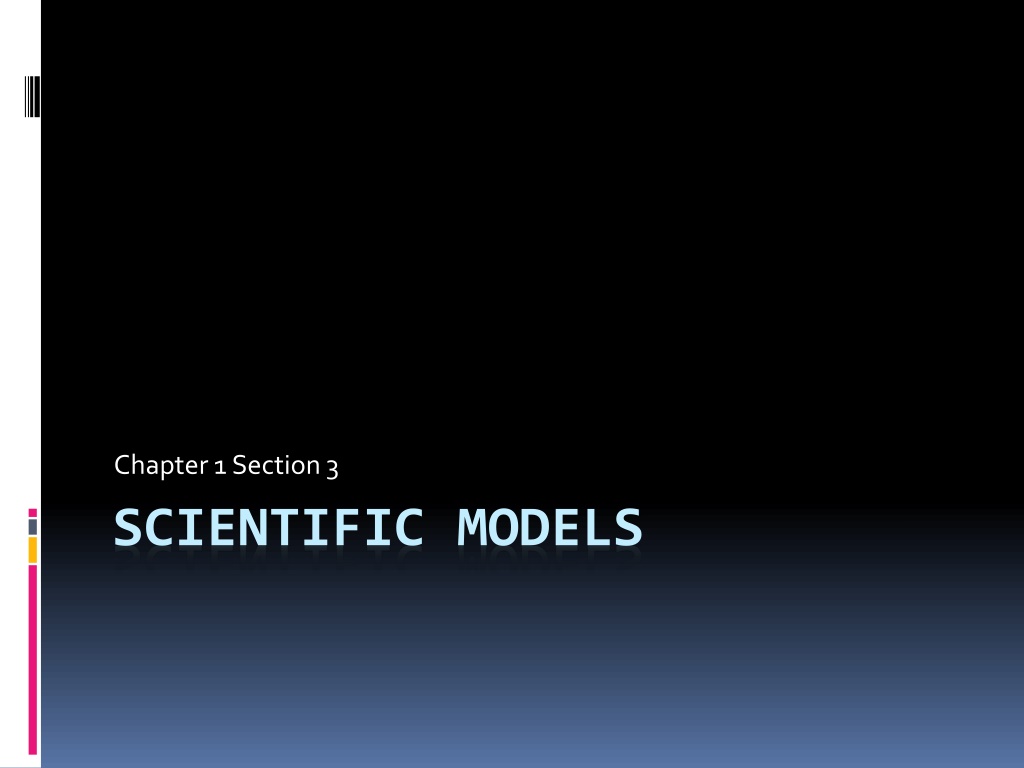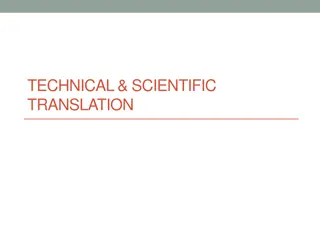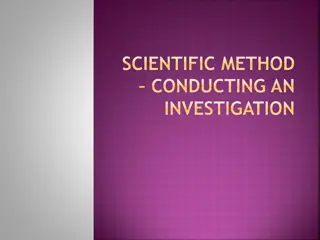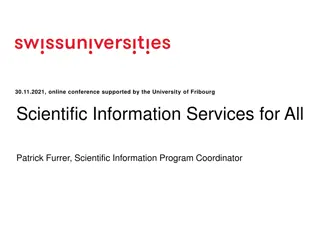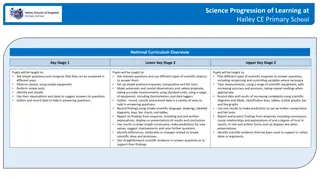Understanding Scientific Models and Their Applications
Explore the world of scientific models through this informative content covering physical, mathematical, and conceptual models. Discover why models are used in science, their types, and potential limitations. Delve into the importance of utilizing models to comprehend complex concepts effectively.
Download Presentation

Please find below an Image/Link to download the presentation.
The content on the website is provided AS IS for your information and personal use only. It may not be sold, licensed, or shared on other websites without obtaining consent from the author. Download presentation by click this link. If you encounter any issues during the download, it is possible that the publisher has removed the file from their server.
E N D
Presentation Transcript
Chapter 1 Section 3 SCIENTIFIC MODELS
Bell Ringer (Brainstorm) To teach cardiopulmonary resuscitation, or CPR, instructors most often use a mannequin to model a human upper torso and head. Why do you think CPR is taught with a model instead of a real human? Explain your answer.
Todays Objectives Explain how models represent the natural world. Identify three types of models used in science. Describe theories and laws.
Alabama Course of Study 1 Identify steps within the scientific process.
Models in Science Model- a representation of an object or system Uses something familiar to help you understand something that is not familiar. There are 3 common kinds of scientific models. Physical Mathematical Conceptual
Physical Models These help you see what it looks like Does not show you how it interacts or works with other things
Turn and Talk Why would someone use a physical model? Why would studying a model not be as accurate as studying the real thing?
Mathematical Models Made up of mathematical equations and data. Some are simple (for example f=ma calculates force) Some are so complex that only computers can handle them These sometimes have variables Sometimes, certain variables that no on thought of exist in a complex model. And a change in any of these variable could cause the model to fail.
Name a possible limitation of a mathematical model. One possible limitation of a mathematical model is that complex models may have unknown variables. If the unknown variables are changed, a mathematical model could fail.
Conceptual Models Some are systems of ideas Others are based on making comparisons with familiar things to help illustrate or explain an idea Example: The Big Bang Theory Describes how the planets and galaxies formed Although it is widely accepted, astronomers have concluded that some data do not fit the model. So, conceptual models may not take certain data into account. Or the models may rely on certain ideas but not on others.
Models: The Right Size Models are used to represent things that are very small or very large. Sometimes, models are used to learn about things you cannot see. For example: sound waves cannot be seen but shown by using a slinky
Scientific Theories Models are often used to help illustrate and explain theories. Theory- an explanation for many hypotheses and observations Supported by repeated tests Can be used to predict what might happen in the future
Scientists use models to help guide their search for new information. This information can help support a theory or can show that the theory is wrong. Models can be changed or replaced over time.
What two things can a theory explain? A theory can explain a hypothesis or an observation.
Scientific Laws What happens when a model correctly predicts the results of many different experiments? Scientific law- summary of many experimental results and observations Tells us how things work Not the same as theories Tell you only what happens, not why Gravity is a scientific law.
Summary A model uses familiar things to describe unfamiliar things. Physical, mathematical, and conceptual models are commonly used in science. A scientific theory is an explanation for many hypotheses and observations. A scientific law summarizes experimental results and observations. It describes what happens but not why.
Exit Slip 1. In your own words, write a definition for the term model. 2. Which kind of model would you use to represent a human heart? A. a mathematical model B. a physical model C. a conceptual model D. a natural model 3. Explain the difference between a theory and a law.
